Additives tested had no negative effects on growth and survival, but vitamins C, E and beta-glucans may enhance PL antioxidant capacity and robustness
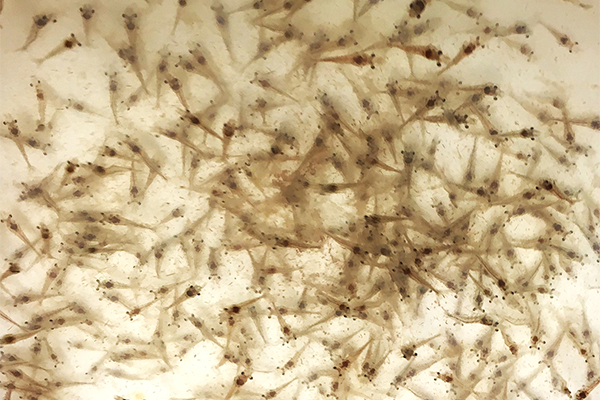
The use of functional dietary additives to stimulate the shrimp immune system has been studied as a prophylactic alternative and is regarded as an extremely important strategy to overcome the constraints of intensive shrimp farming. Organic acids, plant/algae extracts, nucleotides, functional amino acids, vitamins, and naturally occurring immunostimulant compounds such as beta-glucans have been studied thoroughly in diets for fish and crustaceans, as they may improve growth performance, survival, stress, and disease resistance.
Their potential to be included in diets for juvenile and/or adult Pacific white shrimp (Litopenaeus vannamei) has also been demonstrated by several authors, but far fewer studies are available on the use of these supplements in diets for the initial developmental stages of L. vannamei. There is evidence that vitamin C supplemented in diets for shrimp postlarvae (PL) can be an effective antioxidant at the tissue level. More recently, increases in growth performance, digestive enzymes activity, and improvement of immune condition were verified when incorporating commercial prebiotic and probiotic blends in diets for PL. Therefore, innovative nutritional solutions that enhance development and resistance to stress and pathogenic factors during these critical stages and thus improve shrimp quality in posterior phases of production have tremendous potential to reinforce the success of shrimp farming.
This article – summarized from the original publication (Barreto, A. et al. 2023. Health-Promoting Additives Supplemented in Inert Microdiets for Whiteleg Shrimp (Penaeus vannamei) Post-Larvae: Effects on Growth, Survival, and Health Status. Animals 2023, 13(4), 726) – reports on a study to evaluate the effects of several health-promoting nutrients/additives (vitamins C and E, beta-glucans, taurine, and methionine) supplemented in inert microdiets on the growth performance and health status of L. vannamei shrimp PL.
Study setup
L. vannamei postlarvae (PL16) from Blue Genetics (La Paz, Mexico), were reared for 18 days at Riasearch Lda facilities (Murtosa, Portugal). Shrimp were randomly distributed to twelve 50-liter tanks part of a clear water recirculating system. Each tank was stocked with 200 individuals averaging 9 mg (wet weight). Animals were reared under a 12 hour light:12 hour dark photoperiod and were fed close to ad libitum with automatic feeders that supplied eight meals a day. Feeders were cleaned daily and charged with adjusted feed quantities based on the observation of the tanks and the presence/absence of remnants from the previous day. Feed size was 400–600 µm for the first week and 600–800 µm for the remaining feeding period.
Four experimental microdiets were evaluated in triplicates. A positive control diet (PC) was formulated to meet the nutritional requirements of L. vannamei PL, containing 515 g/kg or 160 g/kg of a commercial (SPAROS Lda., Portugal) proprietary marine protein mix; 103 g/kg of fish protein hydrolysate, 19 g/kg fish oil, 28 g/kg marine phospholipids, and 57 g/kg of SPAROS commercial proprietary vitamins and minerals premix. On the remaining treatments, three experimental variants based on the PC were used, differing only in the ingredient formulation by the following: (1) decreasing inclusion levels of the vitamins and minerals premix by 7 g/kg to reduce vitamin C and E contents in the negative control diet (NC); (2) supplementing 5 g/kg of taurine and 10 g/kg of methionine to increase the levels of both molecules in the T + M diet; and (3) supplementing the PC diet with 1 g/kg of Saccharomyces cerevisiae beta-glucans (BG).
For detailed information on the experimental setup, animal husbandry, diet preparation and data analyses, refer to the original publication.
Results and discussion
Overall, the changes in diet formulation did not compromise their adequacy, as good growth performances and survival results were obtained in all experimental treatments, also revealing that good zootechnical conditions were maintained during the trial. Growth results were similar to those reported by other researchers.
Increasing the vitamin C and E supplementation levels in the PC dietary treatment did not produce any changes in growth performance and survival when compared with the NC, suggesting that the levels of these vitamins present in the NC diet still allowed the PL to maintain an adequate development. Like other vitamins, vitamin C and E are essential nutrients, as animals are unable to synthesize enough amounts to meet their physiological needs, and a deficient supply in the diet often results in poor growth, possibly leading to severe health issues and even compromising survival.
Additionally, no changes were detected in the activity levels among most of the immune and antioxidant parameters measured in this study when increasing the levels of these vitamins in the diets. Other researchers have reported thresholds in inclusion levels for these vitamins in diets for L. vannamei juveniles, at which their beneficial effects did not increase after a certain incorporation percentage. The only significant dissimilarity detected was the lower relative expression of one antimicrobial peptide, pen-3 (penaeidins, a key group of antimicrobial peptides in penaeid shrimp, have antibacterial and antifungal activities, which are particularly effective against Gram+ bacteria and filamentous fungi) in shrimp fed the NC diet compared to those fed the PC diet, suggesting that lower levels of these vitamins may impact the shrimp immune status.
Our findings indicate that higher supplementation levels of vitamins C and E in microdiets for L. vannamei PL did not directly enhance growth and survival in the current study but may have improved their robustness. Although not confirmed in the current experiment, this may be an indication that shrimp may have a higher survival capacity in the long term and particularly in a potentially challenging husbandry situation. Therefore, inert diets with adequate levels of vitamins C and E can be vital during critical stages of production, particularly in farms where a nursery system is employed (intermediate step between the early PL stage and the grow-out phase), in which PL are reared at extremely high stocking densities that can induce stress and vulnerability to opportunistic pathogens.
What are the optimal levels for fishmeal and methionine in juvenile shrimp diets?
The dietary supplementation of the essential amino acid methionine (Met) to balance the nutritional profiles of aquafeeds rich in plant-based proteins has become a common practice. Traditionally, methionine supply was ensured by fishmeal, but continuous efforts are underway to reduce the industry dependence on this ingredient and replace it with plant-based proteins, where methionine and another amino acid, lysine, are generally low. Met is also a precursor for taurine (T), an amino sulfonic acid with important physiological functions. The supplementation of this nutrient in diets for L. vannamei shrimp because of its beneficial effects on their growth and immune response. Yet, the evaluation of the supplementation of both molecules in diets for the initial developmental stages of shrimp is still necessary.
Our results also showed that L. vannamei PL fed with the T + Met diet showed similar growth performance, survival, oxidative status, and immune condition compared to those fed the PC dietary treatment, suggesting that the ingredient formulation of the control diet covered the shrimp PL requirements for taurine and methionine, and no extra benefits were obtained through the supplementation of these amino acids. These results can probably be explained by the fact that the PC was a high-quality diet with considerable levels of protein of marine origin. But to better understand these interactions and clarify if the supplementation of taurine and methionine in diets for L. vannamei PL is beneficial when lower vitamin C and E inclusion levels are used, further studies should be conducted.
The Inclusion of beta-glucans (BG) in the diets did not significantly affect the shrimp PL growth performance and survival. Still, shrimp PL fed the BG diet tended to grow less and achieved final weights around 15 percent lower than those fed the PC, although it was not supported by the statistical analysis. Nonetheless, lipid peroxidation levels dropped significantly in shrimp PL fed the BG dietary treatment compared to those fed the PC diet, suggesting that beta-glucans improved the antioxidant mechanisms of the animals. In fact, the immunostimulatory and antioxidant-boosting properties of beta-glucans as aquafeed additives have been reported for several species. These can be tremendously valuable in the larval/PL stages, where shrimp undergo extremely fast development, as accelerated growth is likely to produce excess reactive oxygen species that can result in oxidative stress, damaging key physiological structures.
Our data suggests that beta-glucan supplementation coupled with higher levels of vitamin C and E can boost the antioxidant capacity and immune status of L. vannamei PL. Other researchers have proposed that there is an interaction between beta-glucans and vitamin C that can increase the nonspecific immune response of L. vannamei.
Perspectives
Our results suggest that although no improvements in growth performances and survival were observed at the end of the experimental period, all dietary additives tested have the potential to add value to inert microdiets for L. vannamei PL. Benefits to the antioxidant capacity and robustness of the shrimp PL were clearer when the vitamin C and E levels were higher than those used in the NC, similar to those used in the PC. However, the control diet can be considered a premium option, and it should be expected that the positive effects provided by these supplements are augmented when incorporated into more economical alternatives.
Among the additives tested, the inclusion of beta-glucans in the diets seems to be the most promising, as it reduced lipid peroxidation (the chain of reactions of oxidative degradation of lipids) in the shrimp PL even when compared to a high-quality control diet. When compared to the NC, the interaction between the supplementation of beta-glucans and higher levels of vitamins C and E also seems beneficial to the antioxidant capacity of Pacific white shrimp PL.
Follow the Advocate on Twitter @GSA_Advocate
Now that you've reached the end of the article ...
… please consider supporting GSA’s mission to advance responsible seafood practices through education, advocacy and third-party assurances. The Advocate aims to document the evolution of responsible seafood practices and share the expansive knowledge of our vast network of contributors.
By becoming a Global Seafood Alliance member, you’re ensuring that all of the pre-competitive work we do through member benefits, resources and events can continue. Individual membership costs just $50 a year.
Not a GSA member? Join us.
Author
-
André Barreto, M.S.
Corresponding author
Riasearch Lda, Murtosa, Portugal; and Centro Interdisciplinar de Investigação Marinha e Ambiental (CIIMAR), Matosinhos, Portugal[116,112,46,104,99,114,97,101,115,97,105,114,64,111,116,101,114,114,97,98,101,114,100,110,97]
Tagged With
Related Posts
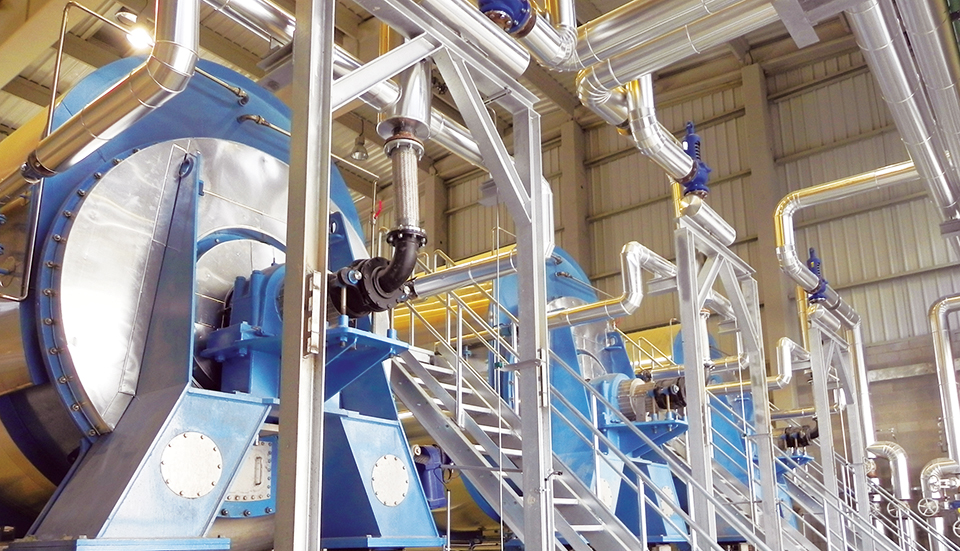
Aquafeeds
Animal byproduct concentrates useful tools in formulation
With the market volatility of fishmeal, as well as rising sustainability concerns, the aquaculture industry is seeking sources of protein, such as animal byproduct concentrates, to substitute for fishmeal.
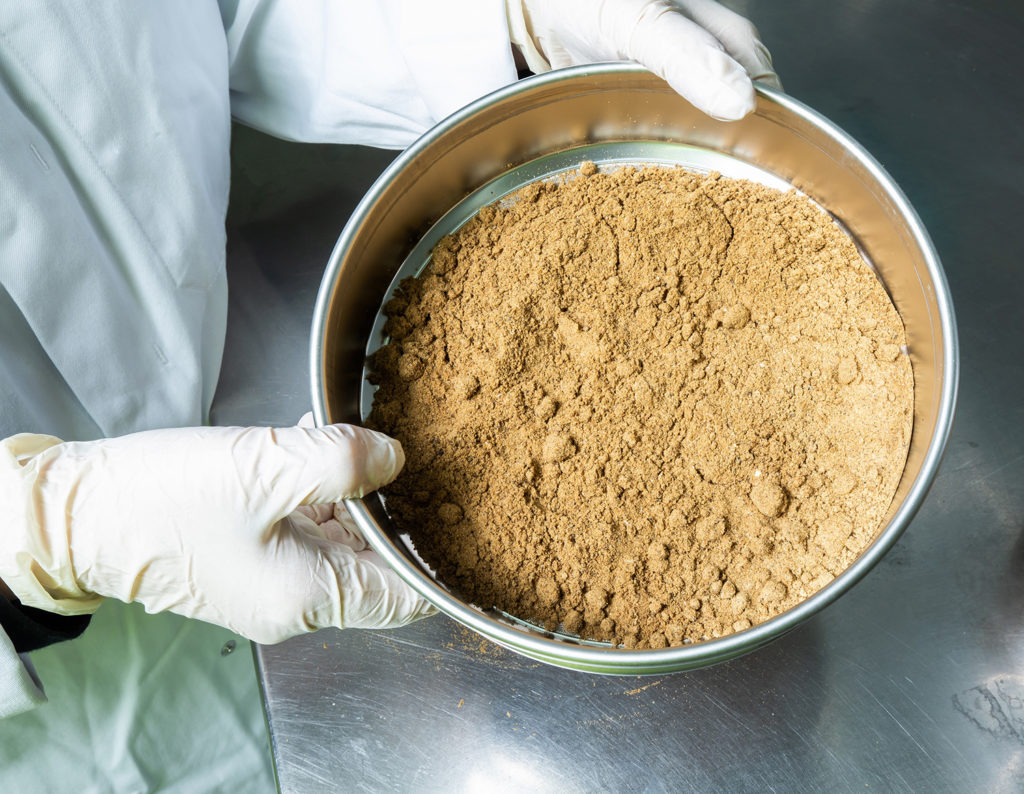
Aquafeeds
Counterpoint: Marine ingredients are stable in volume, strategic in aquaculture nutrition
IFFO Director General Petter M. Johannessen says fishmeal and fish oil offer unmatched nutrition and benefits to fuel aquaculture’s growth trajectory.
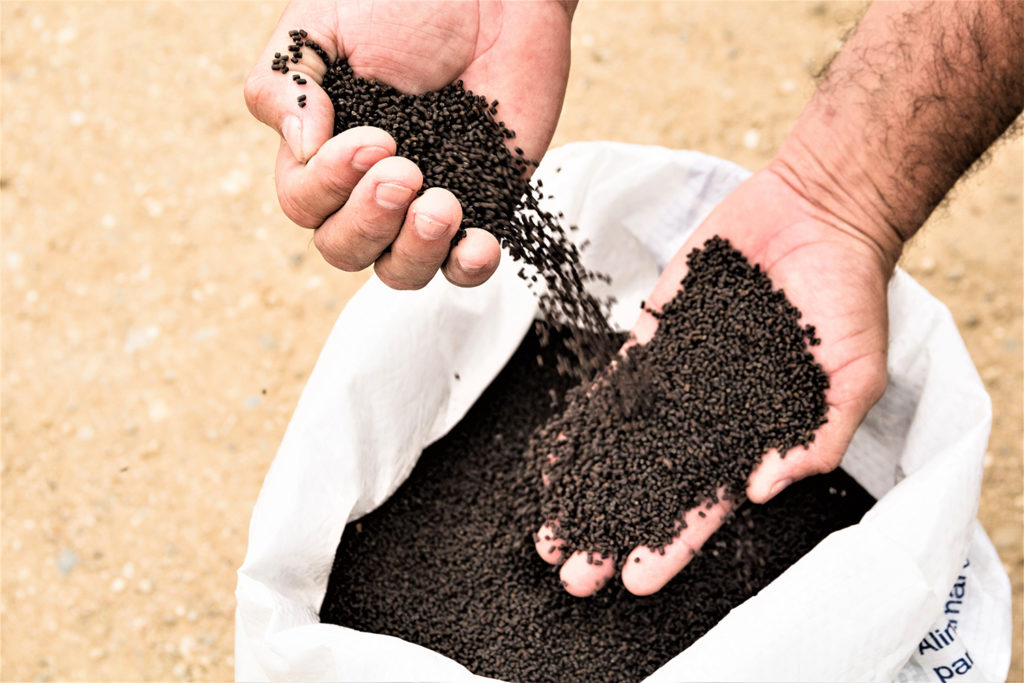
Aquafeeds
Extruded feeds combined with acoustic feeding technology maximizes shrimp farm production
Evaluation of feeds and feeding methods at 639 commercial shrimp ponds in Ecuador showed advantages of extruded feeds and acoustic automated feeders.
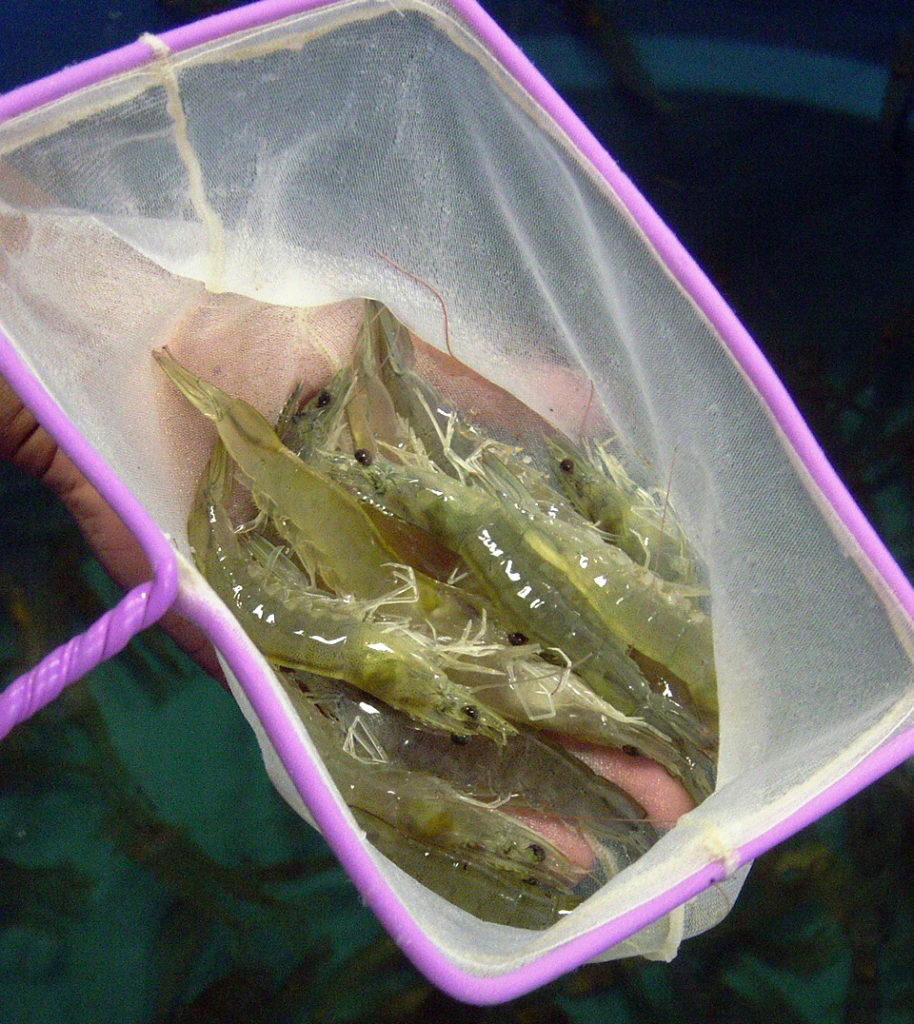
Aquafeeds
Methionine hydroxy analog supplements low-fishmeal shrimp diets
In a study, the authors evaluated the performance of juvenile white shrimp grown at high density and fed diets with varying levels of methionine. Trends toward improvements in feed intake were observed for diets with reduced fishmeal and HMTBa supplementation.



